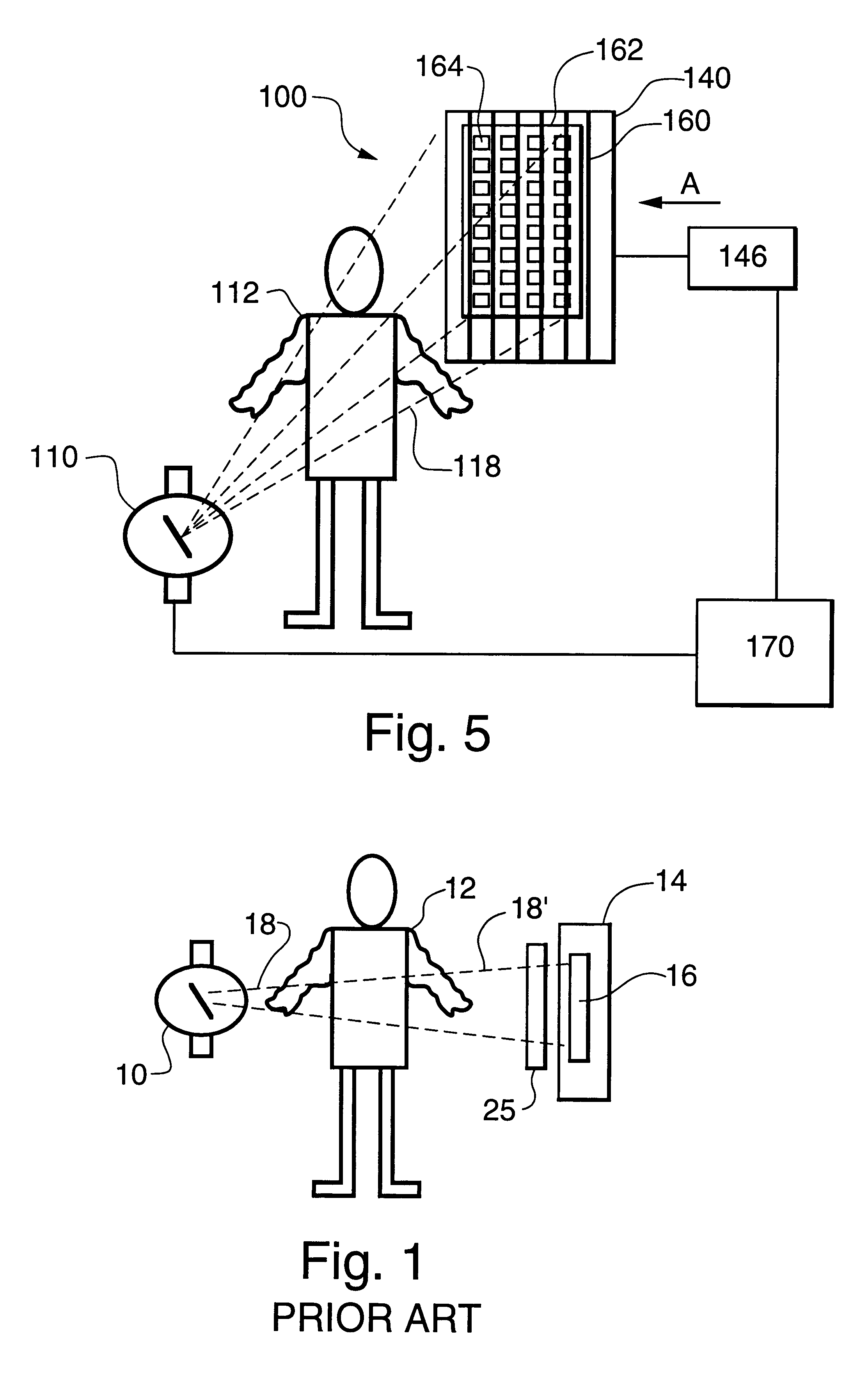Single-stroke radiation anti-scatter device for x-ray exposure window
a single stroke radiation and radiation anti-scattering technology, applied in the direction of instruments, diaphragms/collimeters, diaphragms for radiation diagnostics, etc., can solve the problems of impracticality of positioning and maintaining the anti-scatter grid, image artifacts may be seen, and the use of a single stroke unidirectional linear velocity profile is impractical
- Summary
- Abstract
- Description
- Claims
- Application Information
AI Technical Summary
Problems solved by technology
Method used
Image
Examples
Embodiment Construction
The invention will next be illustrated with reference to the figures wherein similar numbers indicate the same elements in all figures. Such figures are intended to be illustrative rather than limiting and are included herewith to facilitate the explanation of the apparatus of the present invention.
FIG. 1 shows a schematic arrangement in which a source of X-ray radiation 10 provides a beam 18 of X-rays. A target 12 (i.e. a patient in the case of medical diagnostic imaging) is placed in the X-ray beam path. The radiation emerging through patient 12 is intensity modulated because of the different degrees of X-ray absorption in various parts of the patient's body. Cassette enclosure 14, containing radiation sensor 16, intercepts the modulated X-ray radiation beam 18'. Radiation detector 16 absorbs X-rays that penetrate the cassette enclosure 14, and produces a digital image in accordance with the above-referenced patent.
A radiation anti-scatter device 20, known in the art as a bucky, c...
PUM
 Login to View More
Login to View More Abstract
Description
Claims
Application Information
 Login to View More
Login to View More - R&D
- Intellectual Property
- Life Sciences
- Materials
- Tech Scout
- Unparalleled Data Quality
- Higher Quality Content
- 60% Fewer Hallucinations
Browse by: Latest US Patents, China's latest patents, Technical Efficacy Thesaurus, Application Domain, Technology Topic, Popular Technical Reports.
© 2025 PatSnap. All rights reserved.Legal|Privacy policy|Modern Slavery Act Transparency Statement|Sitemap|About US| Contact US: help@patsnap.com



